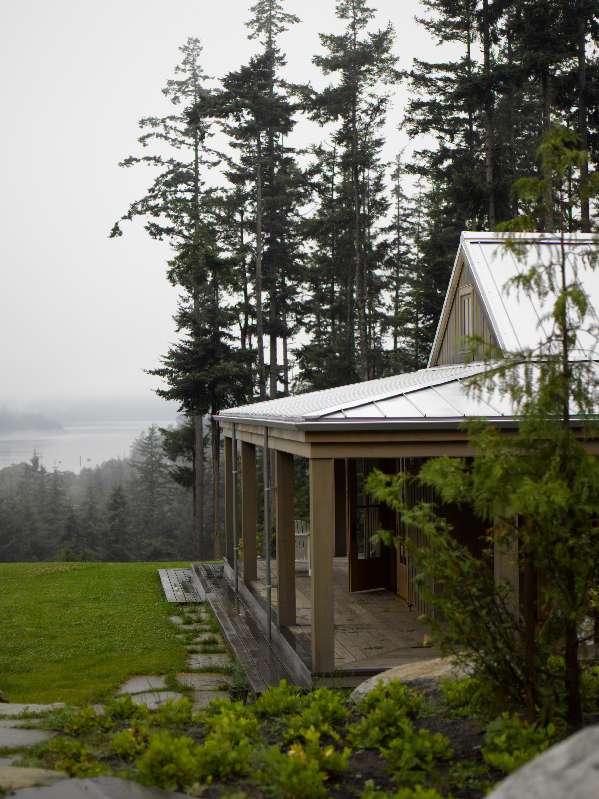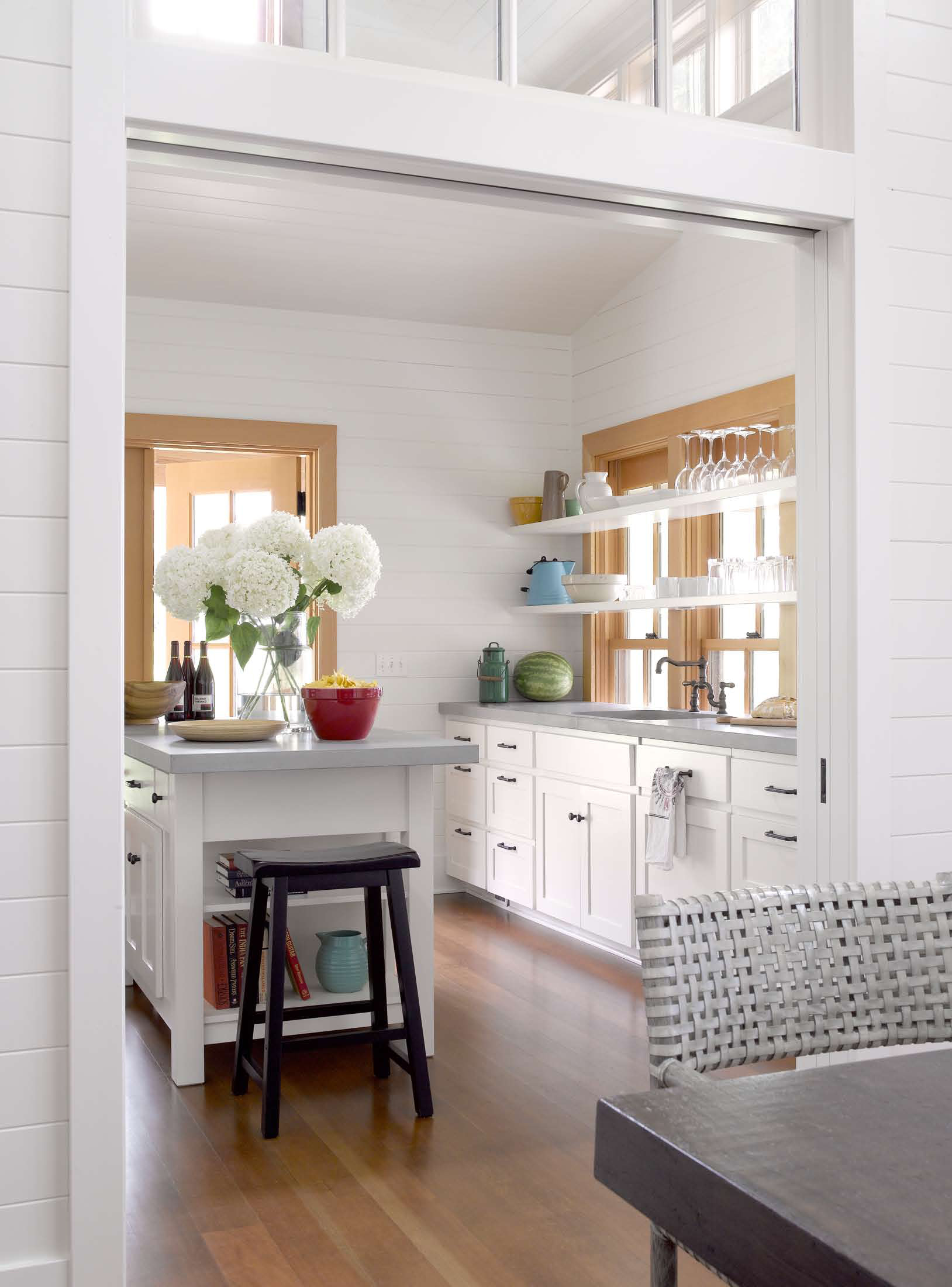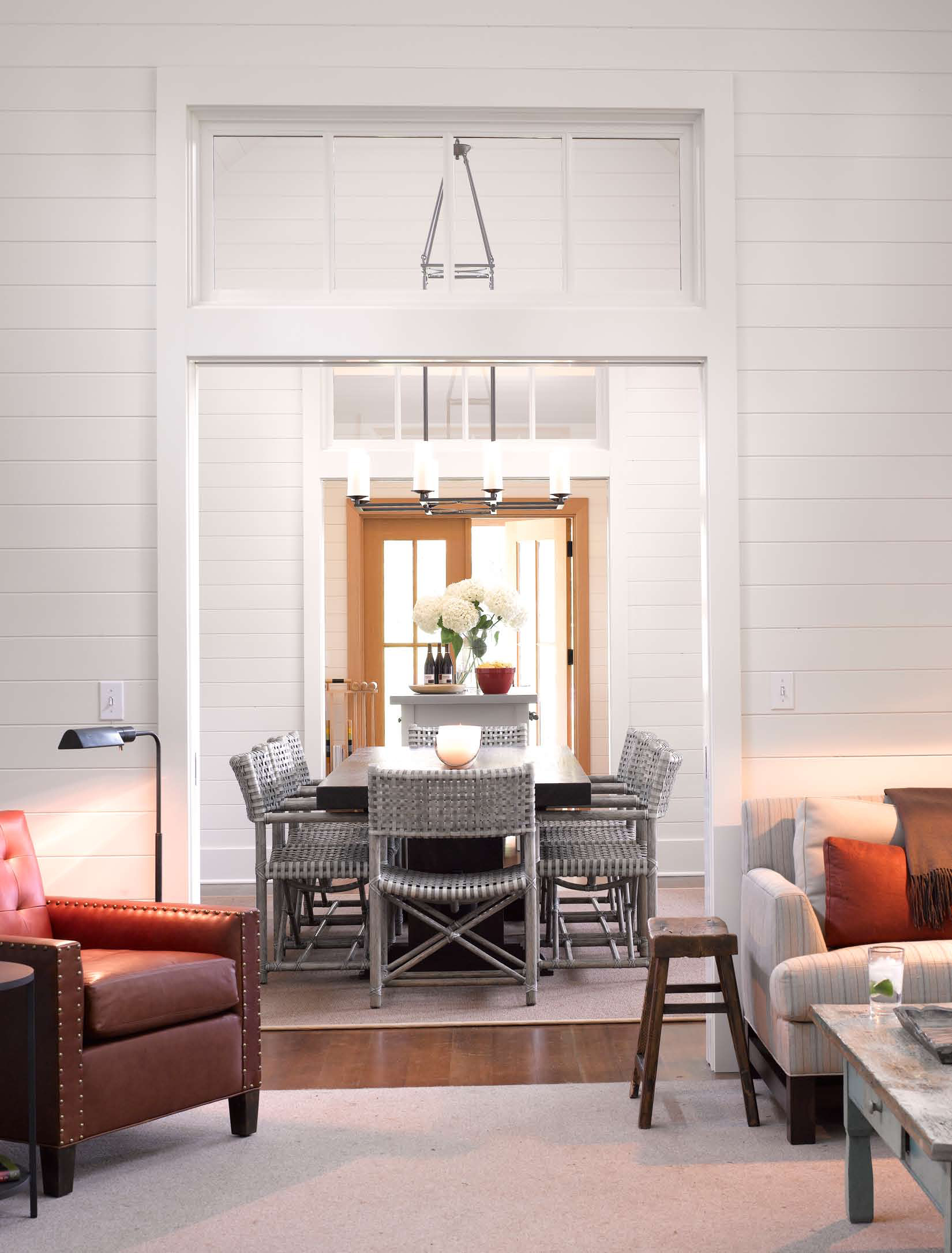 ×
×
PROJECT - WEST SEATTLE RESIDENCE

In a remote spot in the San Juan Islands archipelago, north of Seattle, s small farmhouse campus meander across a hillside meadow on Decatur Island. Taking their cue from the adjacent renovated barn, five structures with skins of weather- bleached cedar melt into the landscape with pastoral ease, their pitched zinc roofs repeating the changing hues and patterns of the Pacific Northwest sky.
The owners, a Seattle couple with older children, gave careful thought to the siting of this weekend retreat, choosing an island accessible only by private boat or plane. “We had a chance to frame a family legacy,” says the husband,” and have a place where the kids could eventually bring their own children.” But family members perpetually moving in multiple directions would need to gather without feeling shoehorned into spaces that didn’t fit their lifestyle.
Architects and partners Tom Bosworth and Steve Hoedemaker, of Bosworth, of Bosworth Hoedemaker, recognized an opportunity to develop a tactile connection among several small buildings and heighten the experience of the verdant landscape that would bind the structures together. An architect prolific in the Pacific Northwest for four decades, Bosworth has amassed a body of work notable for residences that synthesize historic, rural elements with classical principles of axial symmetry.
Near the center of the property is the main cottage, a sunlit hub for cooking, dining and other communal activities. Down the hillside beside a grassy meadow is the cottage’s more rustic counterpart- an open- air stone- and- timber pavilion and hearth overlooking the waters of Lopez Sound. Nearby, a narrow guest cabin joins two bedrooms and their porches with a shared bath. A footpath leads to the master- suite building and beyond that, amid a grove of firs and cedars, the writer’s jut. “It’s easy to design a big building,” says Bosworth, “but a smaller scale allows you to do several things, including use more windows. The trick is to avoid feeling cramped.”
The main cottage is wrapped by a broad porch under deep eaves and outfitted with large chairs to capture views of the changing maritime weather. The interior provides an enfilade of main rooms- kitchen, dining room, living room and study, all lined with walls of tongue- and groove hemlock and fir floors. Painted a gentle white and virtually shadowless, the bright spaces are a rare treat in these sun- starved latitudes. The inglenook’s stacked Montana ledgestone walls and fireplace, with steps and cushioned benches of Huckleberry basalt anchor the heart of the house to the earth like a centuries- old altar.
The kitchen connects easily with the dining room through sliding doors beneath clear transom windows. Open shelves cut a clean line across a sky- to- ground view, tracing only a faint division between architecture and nature.
To complement the crisp living room details laid out by the architects, interior designer Garret Cord Werner designed a sofa and armchairs with dimensions that temper the informality of vacation furniture with the sleekness of an urban condominium. With dark wood legs, they feature natural fabrics in light hues of salt and bleached cedar, Werner felt an easy kinship with the scheme for this rural setting because of its avoidance of clutter. “Many homeowners mimic what they see in shops full of stuff,” he says. “Getting rid of things eases your physical and emotional burden. There’s freedom in having less.”
The separate master suite structure hovers amid a soft carpet of fallen leaves, its interior serene and luxurious. “there’s that little sense of adventure you get shutting down the main house,” says Hoedemaker, “then grabbing your flashlight and trekking out through the trees to find your sleeping cabin, it feels like camp.” The bedroom contains a four poster bed with slender columns that reach toward the exposed rafters and white ceiling. A wood-burning stove is in the corner next to French doors that open to a private porch amid surrounding trees. The couple must take a few sheltered steps in an open-air passage to enter the adjoining bath.
“Normally, a client says, ‘here are the things I want in my house,’” explains Hoedemaker.” In this case the client came to our door, saying,’ we want to spend time up here and have a great experience, help us design what it is that we could be doing.’ We created the fantasy of what it’s like to disappear into the woods.”


Publication – WESTERN INTERIORS
Published – 2008